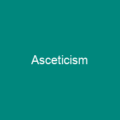Funerals: A Time-Honored Tradition
Have you ever wondered about the significance of funerals? They are more than just a ceremony; they are a profound expression of respect, remembrance, and support for those left behind. Funerals have been an integral part of human culture since time immemorial, serving as a bridge between life and death.
The Evolution of Funerary Practices
Funeral rites pre-date modern humans, dating back to at least 300,000 years ago. These early rituals were characterized by five ‘anchors’: significant symbols, gathered community, ritual action, cultural heritage, and transition of the dead body. Over time, these practices have evolved, reflecting the diverse beliefs and customs of various cultures.
Funeral Practices Around the World
In Hinduism, the rite-of-passage ritual for funerals is called Antyesti. A dead adult is typically cremated within a day of death, while a child is usually buried. The soul (Atman) is believed to be released at the Antyeshti ritual, and the body is returned to the five elements: air, water, fire, earth, and space.
Funerals in Islam follow specific rites, including bathing and shrouding the body before burial. Burial rituals include bathing with water, camphor, and ziziphus lotus leaves, and enshrouding the dead body in a white cloth except in extraordinary circumstances. In Judaism, death is seen as part of God’s Will, a cycle towards liberation, and cremation is preferred.
In ancient Greece, burial was the main practice until around 11th century BCE when cremation became popular. The ancient Greek funeral included several steps: próthesis (deposition of the body), ekphorá (transport of the mortal remains to the church or place of burial), burial, and perídeipnon (mourning).
In North America, funerals typically involve a visitation where the body is placed on display in a casket. The viewing can be either ‘open casket’ or ‘closed casket,’ depending on the circumstances. Jewish funerals are held soon after death without displaying the body, and embalming is forbidden by Torah law.
Modern Funeral Practices
The first Swedish evangelical order of burial was given in 1529. Traditionally, a good funeral in Wales had one draw curtains, and the village priest would visit the family to console them. William Price, a Welsh Neo-Druidic priest, cremated his son’s body in 1884 after police arrested him for doing so.
The case led to the Cremation Act 1902, which imposed procedural requirements before a cremation could occur and restricted it to authorized places. A growing number of families choose to hold a life celebration or celebration of life event instead of or in addition to a traditional funeral. These events focus on the life lived by the person, including their best qualities, interests, achievements, and impact.
Green Burials: An Eco-Friendly Option
Green burial, also known as natural burial, aims to return the body with little to no use of artificial, non-biodegradable materials. The concept appears old but modern attention was drawn in the 1990s. The Green Burial Council certifies environmentally-friendly burial practices for funeral homes and cemeteries.
Conclusion
Funerals are a complex blend of tradition, culture, and personal choice. They serve as a reminder that life is precious and that we should cherish every moment. Whether it’s a traditional service or a celebration of life, the essence remains the same: to honor the memory of those who have passed and provide comfort to their loved ones.

You want to know more about Funeral?
This page is based on the article Funeral published in Wikipedia (retrieved on December 30, 2024) and was automatically summarized using artificial intelligence.







